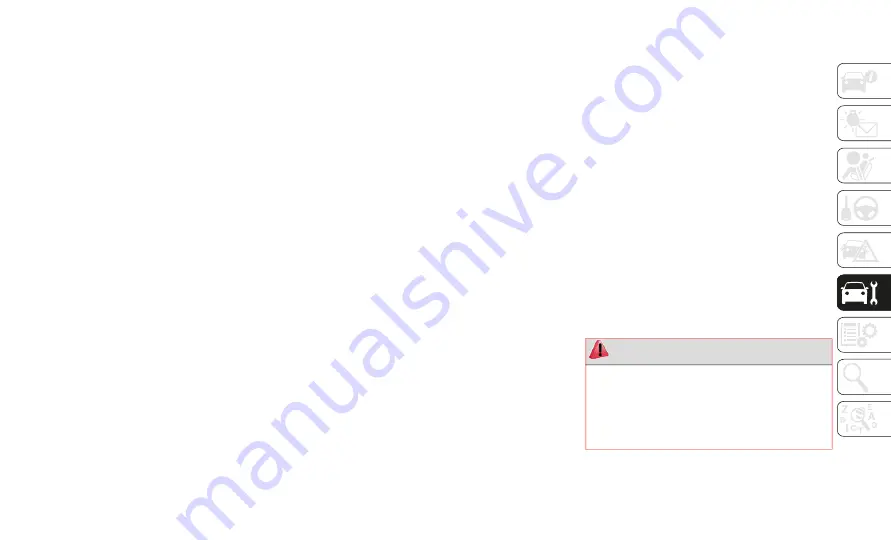
271
Also, inspect them for uneven wear and
damage. Abnormal wear is usually caused by
one or a combination of the following:
Incorrect tire pressure
Improper wheel alignment
Out-of-balance wheel
Severe braking
After rotation, inflate all tire pressures to
specification and inspect the wheel nuts for
tightness.
With Tire Pressure Monitoring System (TPMS)
The TPM system must be initialized after
adjusting the tire pressure, to make the
system operate normally. Refer to “Tire Pres
-
sure Monitoring System” in “Safety” for
further information.
Rotate unidirectional tires and radial tires
that have an asymmetrical tread pattern only
from front to rear, not from side to side. Tire
performance will be reduced if rotated from
side to side.
DEPARTMENT OF
TRANSPORTATION
UNIFORM TIRE QUALITY
GRADES
The following tire grading categories
were established by the National
Highway Traffic Safety Administra
-
tion. The specific grade rating
assigned by the tire's manufacturer in
each category is shown on the side
-
wall of the tires on your vehicle.
All passenger vehicle tires must
conform to Federal safety require
-
ments in addition to these grades.
Treadwear
The Treadwear grade is a comparative
rating, based on the wear rate of the
tire when tested under controlled
conditions on a specified government
test course. For example, a tire graded
150 would wear one and one-half
times as well on the government
course as a tire graded 100. The rela
-
tive performance of tires depends
upon the actual conditions of their
use, however, and may depart signifi
-
cantly from the norm due to variations
in driving habits, service practices,
and differences in road characteristics
and climate.
Traction Grades
The Traction grades, from highest to
lowest, are AA, A, B, and C. These
grades represent the tire's ability to
stop on wet pavement, as measured
under controlled conditions on speci
-
fied government test surfaces of
asphalt and concrete. A tire marked C
may have poor traction performance.
WARNING!
The traction grade assigned to this tire is
based on straight-ahead braking traction
tests, and does not include acceleration,
cornering, hydroplaning, or peak traction
characteristics.
















































